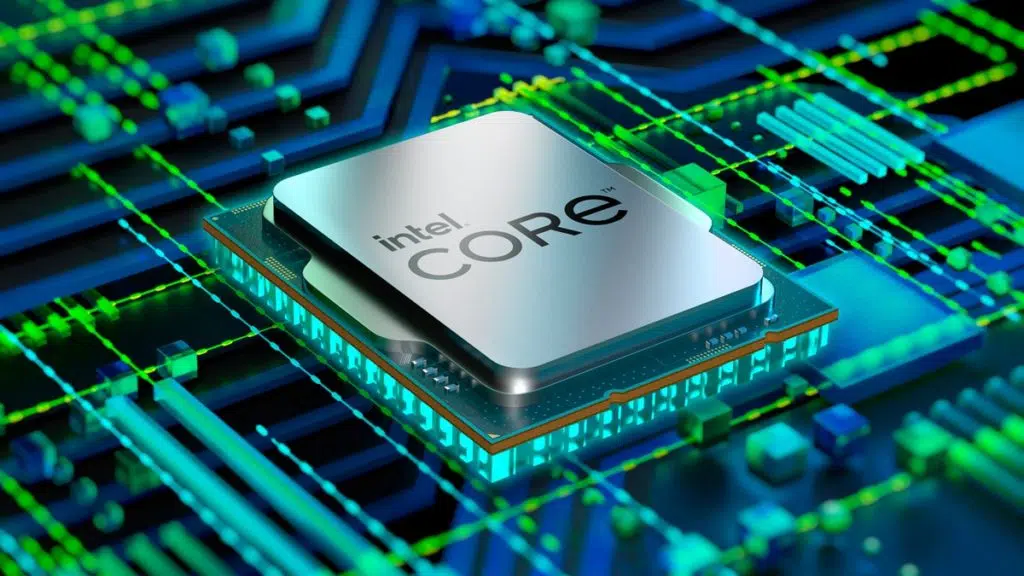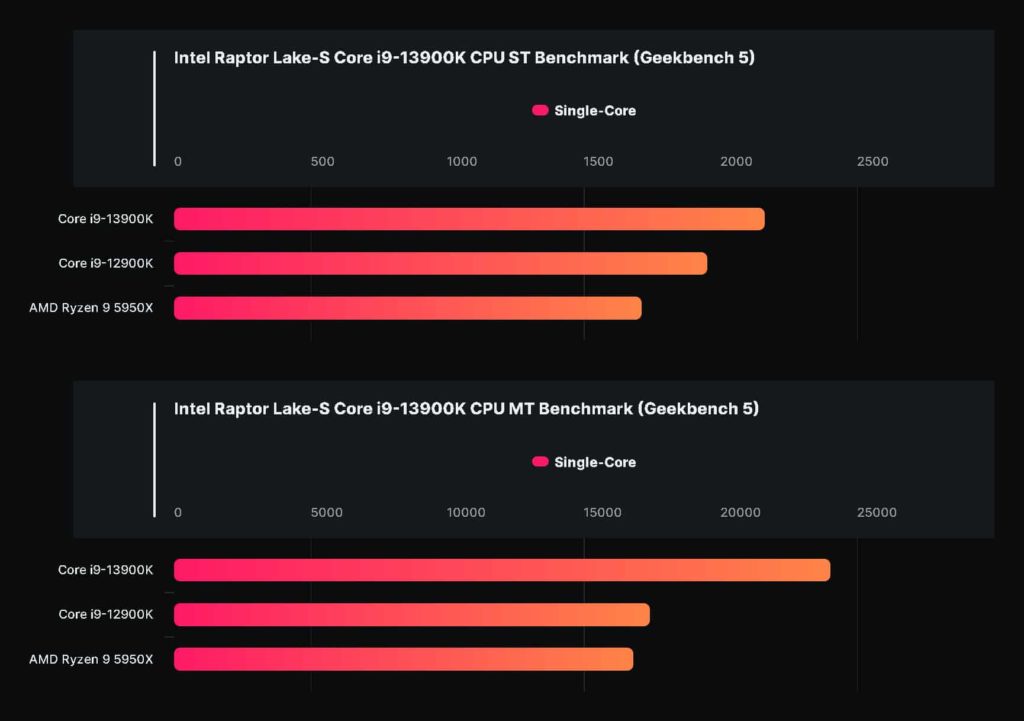
New benchmarks of the Core i9-13900K have surfaced on Geekbench, giving a glimpse at the potential performance of Intel’s upcoming flagship “Raptor Lake-S” desktop processor.
The 13th Gen Intel Core i9-13900K chip that was tested managed a single-core score of 2,133 and multi-core score of 23,701. This is substantially better than what the Core i9-12900K and AMD Ryzen 9 5950X are capable of, according to charts compiled by Wccftech, which tease admirable gains in both single- and multi-core performance for the Raptor Lake-S chip.
This means that the new flagship is up to 48% faster than the Ryzen 9 5950X and 37% faster than the Core i9-12900K in multi-threaded tests which is a huge leap. The addition of 8 extra E-cores are definitely helping the chip surpass the performance of its predecessor by a big margin. Coming to the single-core performance, since Raptor Cove and Gracemont cores aren’t a big architectural lift, most of the performance improvement comes from clock speeds in single-threaded tasks. The i9-13900K still maintains a decent 7% gain over the 12900K and a 27% gain over the 5950X in single-threaded tasks.
[GB5 CPU] Unknown CPU
— Benchleaks (@BenchLeaks) July 11, 2022
CPU: Intel Core i9-13900K (24C 32T)
Min/Max/Avg: 5389/5704/5495 MHz
Codename: Raptor Lake
CPUID: B0671 (GenuineIntel)
Scores, vs AMD 5800X
Single: 2133, +23.4%
Multi: 23701, +120.6%https://t.co/hZKIFAUfvW
With this being an early sample of the Core i9-13900K, performance in the final retail version could be even higher, and users can expect a processor that features 24 cores (8 P-Cores, 16 E-Cores) and 32 threads. The Geekbench listing also indicates that the CPU should have no problem boosting to 5.5 GHz, although some rumors have hinted at single-core boost frequencies of as high as 5.8 GHz.
This test was performed on an ASUS ROG Maximus Z690 Extreme motherboard with 32 GB of DDR5-6400 memory. Intel is expected to launch its first Raptor Lake products by October, and while pricing leaks are yet to come, the Core i9-13900K will presumably be priced in the realm of the current standard Alder Lake flagship, the Core i9-12900K, which launched at $599.
Raptor Lake will officially support native memory speeds of up to DDR5-5600, according to a slide that Intel shared during a recent NAS workshop in China. Some of the motherboards that have already been teased, such as ASRock’s upcoming Z790 and H770 models, will support both DDR5 and DDR4 memory.

